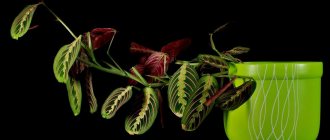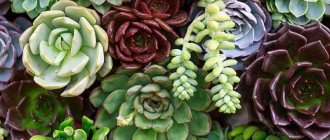- September 2, 2018
- garden plants
- Svetlana Funtova
Garden balsam is an unusually beautiful annual plant with a long flowering period. People call the flower “wet Vanka”, “light”, “touch-me-not”, “hurry”. Due to its raised flowers and relatively green mass, the plant is widely used in landscape design and to create flower beds, lawns, and alpine slides. In this article we will look at how to properly plant a flower in open ground, features of care and cultivation.
Description
The garden balsam flower (photos presented in the article) is a semi-shrub plant. Depending on the species, it can be annual or perennial. Strongly branched - its height, depending on the species, varies from 25 to 70 cm, in the wild - up to 2 meters. Stems are densely leafy, smooth. The leaves are 8-12 centimeters in length, alternately located on the branches of the plant, usually oval or oblong in shape with a pointed end or finely jagged edges, painted violet-bronze or green. During the growing season, small drops appear on the leaves, which gave the balsam its popular name “wet Vanka”.
In countries with year-round cultivation, the plant can bloom for up to 11 months, which is undoubtedly one of its main advantages. Depending on the variety, up to 50 flowers can bloom simultaneously on one balsam bush.
Reasons for the popularity of balsam in landscape design
This unique plant surprises with its variety of varieties; bushes ranging in size from 15 to 60 cm bloom throughout the growing season. The most decorative varieties have become a common attribute of suburban areas, park areas, and urban environments.
Garden balsam with two-tone flower color
Garden balsam flower photo with buds resembling roses is used for various purposes:
- decoration of courtyards;
- as a potted plant;
- as a tapeworm;
- for border planting;
- in panoramic flower arrangements;
- in small flower beds;
- in mixborders.
In flower beds, “impatiens” begin to produce buds in May and finish flowering when cold weather sets in.
If flowers are damaged by return frosts, do not rush to throw away the bush. After feeding and pruning, the “touch-me-not” will continue flowering.
Impatiens are often used in decoration as a monoculture. By combining dwarf varieties up to 15 cm high with tall bushes reaching 50–60 cm, you can get a tiered flower arrangement with long flowering. By planting flowers of different shades, they create floral picturesque pictures. Varieties with pubescent stems are used for spot vertical gardening. Flowers feel great in hanging pots, boxes, flowerpots, and containers.
The ability of balsam to withstand shading allows it to be used for decorating tree trunks.
More than 300 varieties of domestic and foreign selection are known. Wild varieties from various warm countries are used as mother plants. Ground cover and ampelous species of “Vanka mokrogo” with lanceolate and oval leaves of different shades from light green to dark marsh color or green with a burgundy tint have been bred.
Landscape designers value balsam for its unpretentiousness, good survival rate, and excellent seed germination.
Bushes transplanted into pots will delight you with buds until next spring. They can become sources of cuttings for vegetative propagation. Root the stems in water or moist soil, creating tropical conditions: high humidity and temperature.
Reproduction
The garden balsam flower is propagated by cuttings or by seed:
- The first method is suitable for growing at home or in open ground. Select the strongest shoot and cut it at an angle of 45°. The cut is treated with growth stimulants and placed in a vessel with water or pre-moistened soil. When the cutting takes root, it is transplanted into a small pot, the diameter of which is 10-12 cm. If you plant a spring cutting in the ground, the balsam will delight you with its flowering already in the same summer. A summer cutting that is planted will bloom in the fall and continue to bloom in the winter in the presence of warmth and light. An autumn seedling needs additional care, otherwise there is a risk of rotting of the root system.
- Seeds begin to be sown in early March; with the appearance of two balsam leaves, they are planted in different pots. Towards the end of May, plants can be planted in open ground.
Growing from cuttings
Propagation of balsams by cuttings is also practiced. Cuttings can be carried out at any time of the year. Cuttings quickly take root and grow into new plants. This happens as follows:
- Make cuttings of 5-6 cm in size, but they should have 3-5 leaves.
- Remove the lower leaves of the cuttings and place them in a bowl of water, place it away from direct sunlight.
- At about 7-10 days, roots appear, after which the cuttings can be placed in pots to grow on a windowsill or planted directly in open ground.
Further caring for plants consists of systematic watering, sufficient lighting and maintaining the temperature at 20-22 degrees.
You should not water too often and abundantly, because the stems of balsams are quite tender and often rot.
Where is the best place to plant seedlings?
It is best to grow balsams on the eastern or western side of the site. With sufficient lighting, the sprouts will quickly gain strength and bloom for a long time.
If you plant seedlings in a shady place, the plants will grow in length, but will bloom half as much as usual. If you grow flowers on the sunny side, then in the midday heat they will need to be shaded.
“Vanka wet” can be planted in a flowerbed with any variety of flowers, but the best neighbors with which it looks great are verbena, fuchsia, begonia and ageratum.
How to plant in the ground?
Seedlings that have grown well and become strong in the house can be planted after the end of frost.
Before planting, they need to be hardened off and allowed to get used to the street. To do this, containers with seedlings need to be taken out to an open balcony or garden.
For seedlings, you need to make small holes at a distance of 25-30 cm. If the soil is poor, then you need to pour a little peat, humus and sand into the holes. Carefully remove the plant bushes from the container, place them in the hole and sprinkle them with a mixture of soil and other fillers.
After planting the seedlings, they need to be watered and mulched with sawdust or other material. You can add splendor to the future bush by pinching the tops.
Picking balsam. Video:
GARDEN BALSAM, PICKING BALSAM SEEDLINGS!
Growing conditions: soil, temperature, lighting
Impatiens cultivation and care largely depend on temperature conditions, area illumination and soil quality.
- For a plant to grow and develop well, it needs sufficient humidity and good lighting. Impatiens belong to light-loving flowers, but still the best growth and flowering indicators are shown by representatives grown in partial shade lighting. It has a bad effect on the plant, and sometimes leads to death when grown in the shade.
- The soil around the balsam needs to be loosened from time to time, but not too deep. In the off-season (once every 14 days), the flower needs to be fed. During the winter flowering period, feeding the plant is also necessary, but this can be done once a month.
- The optimal temperature for growing balsam in summer and spring is from 22 to 25 ° C, subject to regular watering of the substrate and ventilation of the room.
Flowering and what to do after flowering
Important details:
- Impatiens produce buds and delight the eye with spectacular colors for several months. There is no specific flowering period; the timing depends on the variety and variety of garden plant.
- At high temperatures, dry soil and air, the buds fall off.
- Fertilizing is not carried out during flowering; potassium fertilizers are applied during the period of bud release.
- If there is not enough space in the pot or a lack of nutrients, the plant blooms poorly.
- Buds and leaves fall off after cold rain or sudden temperature changes, or frosts.
- Poor lighting, low temperatures, short daylight hours are factors that interfere with the flowering of balsam, especially in winter.
Planting methods
On the territory of Russia, planting and caring for garden balsam is carried out only with the onset of a warm period. The plant is planted in open ground no earlier than the air temperature rises to 20 °C.
There are 2 planting methods:
- planting seedlings;
- sowing method.
The shelf life of garden balsam seeds is approximately 8 years; by purchasing them once, you can provide yourself with seedlings for several years. Better germination can be achieved after 3-4 years of storage.
Diseases and pests, control methods
Parasitic insects and mites settle on Vanka Mokroy:
| Types of pests | Causes | Fighting methods |
| Aphid | Improper implementation of agrotechnical measures, abundance of garden ants protecting aphids | Treatment of leaves on both sides, stems, flowers with tobacco dust. Planting balsam near the beds where vegetables from the umbrella family grow: natural enemies of aphids often live there: ground beetles, ladybugs |
| Spider mite | Soil drying out, heat, moisture deficiency | Spray the bushes more often in the evenings, lightly shade them to protect them from the scorching sun, and moisten the soil in time. Treat with a solution of laundry soap, spray with acaricides (anti-tick products): Sunmite, Fitoverm, Apollo, Actellik, Anti-tick. Fitoverm is the least toxic product, other drugs are hazard classes 2 and 3, it is important to protect the face, hands, eyesight and respiratory organs |
| Whitefly | The weather is warm, there is a lot of moisture in the air, the plantings are very thick. The bushes are weak, fertilizing is carried out in violation of the deadlines | To catch insects, hang sticky traps and treat them with insecticides every 7 days. |
Another useful table with data on balsam diseases:
| Diseases | Reasons for development | How to treat a plant |
| Gray rot, powdery mildew | Increased air and soil humidity, excessive watering | Remove the infected specimen(s), if the affected area is small, cut off the diseased shoot, treat the cut with charcoal powder. Copper sulfate and fungicides (antifungal drugs) give a good effect: Barrier, Barrier, Fundazol |
| Bacteriosis, mosaic virus | Movement of pathogens from neighboring plants, more often vegetable crops. Viruses infect weak plants if agricultural practices are not followed | The underground and above-ground parts are removed so that the diseases do not spread to neighboring bushes. It is important to find out what rules the grower is violating and adjust the care of tropical specimens |
How to prepare seeds for planting?
Garden balsam seeds (photos of which are presented in the article) require careful care and proper preparation.
First of all, the seeds must be disinfected in a bright solution of potassium manganese or other liquid with disinfectant properties available on hand. The seeds are soaked in the solution for 15 minutes, then placed on a damp cloth to swell.
Several seeds are dropped into prepared, moistened holes and sprinkled with soil. The top of the soil is lightly sprayed and covered with cellophane. Under no circumstances should the soil be allowed to dry out or the temperature drop below 20 °C. After 1-1.5 weeks, when shoots appear, the film can be removed. In case of dense sowing, seedlings are pruned or thinned.
Preparing the soil and container
When growing garden balsam at home, the plant should be provided with loose soil. Excessively enriched soil composition contributes to the rapid development of green mass to the detriment of flowering.
The most optimal soil for a flower is an even ratio of turf, compost and humus, or peat and sand in equal proportions and their double portion of leaf soil. Seedlings do not tolerate organic fertilizers.
It is best to grow balsam in separate containers or medium-sized pots with drainage holes. It’s good if the size of the container is only a few centimeters larger than the sprout.
Transfer
Over time, mature balsams grown in pots will require larger containers due to their rapid growth and significant root development. In areas with mild climates, flowers are usually replanted in the spring into a container slightly larger than the previous one. This will help prevent excessive development of the root system at the expense of the aboveground part. The plant should be replanted together with a ball of earth, and new fresh soil with a high content of organic matter should be added.
Sowing
Planting garden balsam in a container is carried out in several stages:
- The soil in the prepared container is thoroughly loosened and leveled, then the surface is moistened with settled water at room temperature. Seeds are placed on top.
- If sowing is done in separate pots, then no more than three seeds are placed in each. When planting in a large container, the seeds are laid out according to the principle of a square - 4 by 4 cm.
- For better germination, seeds require good lighting, so they are left on the surface of the ground or lightly dusted with sand.
- After this, the soil is moistened again and covered with a transparent film or other transparent cover.
- Containers with seeds are placed in a well-lit and warm place. Direct rays of the sun can be destructive to seeds, so it is better if the light is diffused.
- Every day the soil must be moistened and the room ventilated for 3-5 minutes.
- The air temperature should not be lower than 20 °C.
If the outcome is successful, the first shoots will appear in 7-10 days.
Varieties, varieties
There are many types of this ornamental shrub. In addition to natural specimens, breeders have developed a large number of new hybrids. These include varieties: “Elizabeth”, “Camellia”, “Carmelita”. The New Guinea fire is very beautiful. It has erect, thick stems, large dark green leaves and bright peduncles up to 5 cm in size.
Such beauty can decorate a balcony, terrace and window. Therefore, growing becomes a pleasant hobby for lovers of balsam bouquets.
Roly weed, although a perennial species, is most often grown as an annual crop. He received this nickname due to the formation of sweetish droplets on the leaves.
Other gentle names are also known: “touch-me-not” - because of the capsules with seeds that shoot out when touching the stem; “light” - because of the multiple bright red, as if burning, petals.
The buds are in the form of double roses or flat, like saucers, consisting of several delicate petals, 4-6 cm in diameter. The color varies: from light pink, carmine, lilac to dark purple.
Caring for seedlings and when to plant them in the ground?
As the seedlings develop, the care of garden balsam changes, but this is done in stages. First, the duration of ventilation is increased, then small holes are made in the covering film and only then it is completely removed.
Now you can start hardening the seedlings. Every day the air temperature is reduced by one degree to 16 °C, while watering and lighting are not changed. Thinning or picking is carried out after the appearance of two full leaves. After this, the frequency of watering can be reduced.
4-5 weeks after planting the balsam, the seedlings are accustomed to the open air. For the first two days, the sprouts are left outside for a couple of hours, extending the residence time every day. As a result, after a week the seedlings remain in the air all day.
Young plants have not yet become strong, so pots with sprouts are protected from exposure to sun and wind. Watering is carried out in the evening, when the seedlings are brought home. The water should be at room temperature or a few degrees warmer.
As a rule, plants are transplanted into open ground in the last ten days of May, when warm weather sets in. The sprouts are transplanted with their own lump of earth at a distance of 25 to 50 cm, depending on the type of balsam.
Types and varieties of balsam for growing outdoors
Krinum - garden flower, planting and care in open ground
Most varieties of garden balsam were bred in Europe; they are not so numerous. Plants vary in flower color, structure, and shape. There are specimens similar to camellias, roses, and carnations.
Tom Thumb
Compact, dense bushes with a height of 25 to 40 cm. The variety is distinguished by the variety of shades of petals and the duration of flowering. The flowers are double, cover the bushes in large quantities in June and remain, replacing each other until September. And if the air temperature allows, then Tom Thumb blooms until mid-October. Prefers slightly shaded areas, light fertile soils. In such conditions it produces the most magnificent and abundant flowering. It is easy to care for.
Variety Tom Thumb
Balsam Ironbearing
The name “iron-bearing” is explained by the presence of special glands, dense compounds that are located at the base of the leaf plates. The annual shoots are smooth, reaching 50 cm in height. The leaves are bright green, oval, about 15 cm. The flowers are attached to long peduncles. Their color can be pink, bright red, or wine shades.
Important! The disadvantage of this variety is that over time it can turn into a weed.
Hawker's Balsam
The natural habitat of this species is New Guinea, Solomon Islands. It was discovered by botanists in 1884. Wild forms have not taken root as an ornamental crop on the European continent. However, on their basis, large-scale work was carried out to develop hybrid varieties.
A distinctive feature of Hawker's balsam is its large flowers of a beautiful purple hue with a whitish core. The leaves are ellipsoid, green, with beige veins.
Impatiens grandiflora
The birthplace of the species is Sri Lanka. Valued by gardeners, it is becoming increasingly popular due to its large flowers. Their diameter reaches 6 cm. And the color can be different: white, pink, deep red, salmon, purple. Varieties with two-color colors have also been bred. Due to the fact that new buds are constantly forming and blooming, the effect of long-term flowering occurs. It ends only with the onset of frost.
The plant is bushy, densely covered with foliage. Its height and diameter are about 30 cm. The leaf blades are dark green, with a jagged edge. They are practically hidden by a large number of flowers.
Large-flowered balsam
Impatiens creeping
One of the shortest varieties. Miniature plants have an unusual stem color - reddish-brown. The golden hue of the petals looks contrasting against its background. In Russia, this plant still remains very rare.
Impatiens impatiens
A well-known species native to Bengal. In this region, the plant is grown not so much for decorative purposes, but as a seasoning for food. This is a herbaceous annual with a straight stem 25-45 cm high, lanceolate narrow leaf blades with a serrated edge.
The flowers are large, located on short stalks, several in each leaf axil. The diameter of the flowers is about 3 cm, and the color is pink or purple-white. Some varieties have double petals.
Note! The fruits are pubescent, egg-shaped capsules. Flowering period is from July to August. The fruits ripen in September.
Balsam Camellia
The Camellia variety got its name from the similarity of the shape of the flowers to real camellias. Their shades range from purple to snow-white. The bush is covered with many leaves and flowers arranged in pairs. Their size is about 5 cm.
The Camellia variety is very thermophilic and does not survive at low temperatures. Before planting in open ground, seedlings are germinated in good lighting conditions. Without light, plants produce arrows. Flowering occurs at the end of June.
Balsam Carmelita
The stems of the Carmelita variety rise 70 cm above the ground. The plants have a pyramidal shape. The stems are fleshy but fragile and break at the nodes, so they are protected from strong winds. The flowers are double, up to 4 cm in size. Their shape is camellia-shaped, and their color ranges from purple to white. The first buds open in June. Flowering does not stop until September.
The variety is very thermophilic and responds to any temperature changes. Seedlings are planted in open ground in late May - early June.
Variety Carmelita
Balsam Fashionista
The highlight of the variety is its contrasting color. Its two-tone, hot pink and white camellia-shaped double petals do not go unnoticed in the flowerbed. They bloom in the axils of each leaf. The plant itself is erect, 40-50 cm high. It flowers very profusely. In order for the bush to acquire a beautiful shape, it is pinched.
The flower is photophilous and heat-loving, but can grow in slight shade. Loves fertile light soil. Can remain fresh for a long time when cut.
There are other types: Waller's balsam, New Guinea, terry, impatiens small-flowered.
Site selection and soil preparation
For proper care and planting of garden balsam (a photo of the plant is presented in the article), the growing location and soil play a significant role.
The ideal site for the plant would be a place protected from the winds, with diffused sunlight. Impatiens is a heat-loving plant, so sharp temperature fluctuations are destructive for it, as are scorching sun rays, which negatively affect the growth and development of the flower. Flower beds and flower beds with balsam are best planted along the house, gazebo or near trees.
The soil for the plant must be prepared in advance, so balsam planted in heavy soil with close groundwater develops poorly, its leaves become smaller, and its flowering is poor.
You can avoid this if:
- if moisture stagnates, provide the root system of the flower with drainage from sand, crushed stone, stone or other available materials;
- loosen heavy clay soil with humus, sand, perlite or other appropriate material;
- ensure the appropriate PH level of the soil; if it is overly acidic, flavor it with limestone and dig it up;
- maintain a nutritional balance; if humus was used to loosen the soil, no additional fertilizers are applied.
general characteristics
Impatiens is an ornamental plant that is available in a wide range of colors and varieties. The genus Impatiens includes about 500 species of plants of tropical origin, grown as annual or perennial flowers in garden beds and at home. Impatiens are characterized by very rapid growth. In fact, in a short time, numerous fleshy and succulent stems emerge from the shallow and grouped root system, covered with translucent dark green leaves with jagged edges.
During the flowering period from late spring to early winter, single or spherical flattened flowers appear at the tops of the stems and at the base of the leaf axils in various shades of red, pink, white and purple. In the center of the flowers, fruits ripen - small oblong capsules containing spherical black seeds that can be used for propagation.
Caring for an adult plant
Impatiens is not a demanding plant; it requires timely watering and systematic feeding.
The nuances of planting garden balsam and caring for it (photo below):
- Water the bush abundantly, at the root. It is advisable that water does not fall on the flowers during watering. On hot days, balsam leaves are sprayed twice a day - morning and evening. The soil around the plant is loosened superficially 2-3 times a week.
- Water for irrigation should be rain, river or settled water, approximately the same temperature as the air. If, over time, a white deposit of salt and lime has formed on the soil, it is carefully removed and replaced with earth of a similar composition.
- In the case of balsams, foliar feeding is highly not recommended. Fertilize plants by root method in small doses, once every two weeks until September.
- At the beginning of budding, the flower is fed with mineral fertilizers containing phosphorus and potassium. Nitrogen-based fertilizers are prohibited during this period.
- As a rule, the plant is not susceptible to attack by pests; if this cannot be avoided, the balsam is treated with an appropriate insecticide.
- Fungal diseases are also not characteristic of balsam, but it can be infected by watering too frequently and abundantly. If the root system is damaged by a fungus, the infected parts are removed, the remaining parts are treated with antifungal drugs. Watering frequency is reduced.
Watering and fertilizing
How to care for balsam growing in the garden? It must be watered regularly, but so that the water does not stand in the soil. If you don’t water the plant enough, its leaves will curl into a tube, become dull, then wither and fall off.
It is recommended to water flowers in the evening, after sunset. If the weather is rainy, then there is no need to water the plants.
Impatiens need to be fertilized every two weeks. Complex fertilizers for flowering plants are suitable for them. They must contain nitrogen and potassium - as a result of the presence of these components, the plant will bloom long and luxuriantly. It is important to regularly remove wilted and dried flowers so that they do not prevent fresh buds from blooming.
New Guinea balsam, collection, care, features
Plant nutrition
The garden balsam flower, a photo of which is presented in the article, begins to be fed three weeks after planting. Complex mineral fertilizers are best suited for this. If you feed the plant too often, the bush will begin to shed its leaves and bloom worse. Therefore, it is recommended to use only half the required dose of fertilizer or halve its concentration.
Feed balsam 2 times a month after watering. Sick and weakened plants should not be fertilized.
Growing Tips
In order for garden balsam to sprout on time, grow well and not get sick, it is necessary to take into account some nuances of growing the plant:
- The flower prefers slightly acidic soil.
- If you plan to grow the plant in a pot, you need to organize a 3 cm drainage layer of fine crushed stone at the bottom.
- If the air temperature at night is below 10 °C, it is better to wait to plant the plant in open ground, otherwise it will most likely die.
- Impatiens growing in the shade bloom sparingly and grow very elongated; 10-12 hours of daylight is considered ideal for it.
- The soil around the plant should not be allowed to dry out; the flower will slow down its growth and the flowers will begin to fall off.
- The quality of the cuttings is affected by the frequency of pruning the main stem.
- To spray balsam, it is recommended to choose a sprayer with the smallest drops.
- Garden balsam is successfully combined in joint plantings with such plants as: fuchsia, begonia, petunia,
There are more than 500 varieties of balsam (ferruginous, creeping, small-flowered, Waller's balsam, etc.), each variety is characterized by an individual shape and color. Due to its unpretentiousness and bright flowering, it is often used to decorate parks, flower beds and home areas.
Classification
Modern impatiens are divided into three groups: traditional ones with green foliage and simple flowers, hybrids with lush flowers that almost completely hide the green leaves of the plants, and New Guinea ones with unusual coloring of foliage and flowers.
Balsams of the first group are the most common and look simple but gentle. Their flowers come in a variety of shades: red, white, pink. The foliage is ordinary and does not stand out as original, and the stems have many branches. Particularly attractive are the double flowers of a delicate white hue.
The second group has orange and purple shades of petals, which are double, quite large in size and shape: the type of rose, camellia, carnation. The bushes of these plants are very compact, and there are so many flowers that the foliage is invisible behind them.
Among these indoor inhabitants there are so-called bouquet species. These plants have flowers located above the crown, creating the impression of a bouquet in a pot.
The most typical among the varieties of terry perennials of the third group is Fiesta. The flowers of this variety have many colors. They are resistant to low temperatures, and therefore are most often planted in city flower beds.











